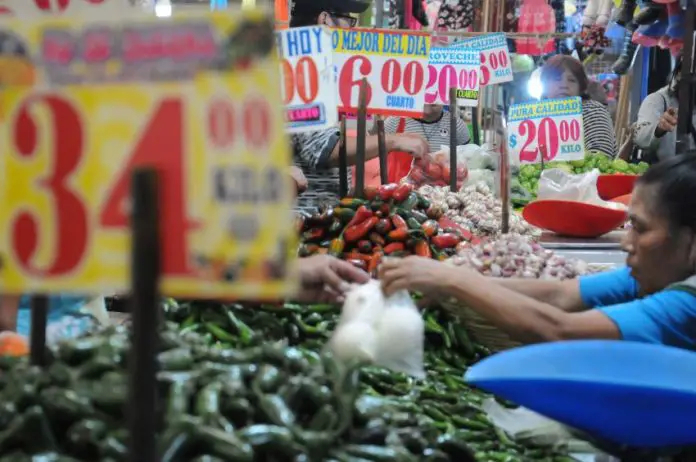Mexico’s annual headline inflation rate rose in the first half of November as lower summertime electricity rates came to an end in close to a dozen cities.
The headline rate for the Nov. 1-15 period was 4.32%, the national statistics agency INEGI reported Thursday, up slightly from the 4.26% reading for the entire month of October.

On a positive note, the annual core inflation rate, which excludes volatile food and energy prices, declined to 5.31% from 5.5% in October.
Among the drivers of inflation were processed foods, beverages and tobacco, which were 6.8% more expensive than a year earlier, and school fees, which rose 6.6% on an annual basis.
An increase in electricity prices in 11 cities contributed to the slightly higher headline inflation rate in the first half of the month, and to a larger extent, the 0.63% fortnight-over-fortnight increase.
Power prices rose 22.3% on a national basis compared to the second half of October as summer rates came to an end in Mexicali, Ciudad Juárez, Culiacán, Chihuahua, Hermosillo, Matamoros, Colima, La Paz, Huatabampo, Jiménez and Esperanza.

The hike in the cost of electricity was higher than that for any other individual product or service reported by INEGI.
The price of green tomatoes shot up 18.8% compared to the second half of October, poblano chili peppers were 14.3% more expensive, airplane tickets increased 11.6% and providers of professional services charged clients an extra 8.7%.
The goods and services that decreased the most in price on a fortnight-over-fortnight basis were limes (-15.8%); zucchini (-5.3%); onions (-3.9%); and hotels (-3.8%).
The uptick in inflation to 4.32% – slightly higher than the consensus forecast of economists polled by Reuters and Bloomberg – came after the annual headline rate declined during nine consecutive months between February and October.
Inflation has been above the Bank of Mexico’s 3% target, give or take a percentage point, for almost three years. Seeking to bring inflation under control, the central bank began a monetary policy tightening cycle in June 2021, adding 725 basis points to its benchmark interest rate to reach 11.25% last March, a record high.
The bank’s board maintained that rate at five subsequent monetary policy meetings, and is expected to do so again when its members meet for the final time this year on Dec. 14.
Bank of Mexico Governor Victoria Rodríguez said last week that cuts to the key interest rate will occur when macroeconomic conditions allow them, adding that “we do not see that for the rest of this year.”
An initial cut to the record high 11.25% rate is considered likely in the first or second quarter of 2024, provided inflation returns to the downward trend seen throughout most of 2023.
With reports from Milenio
